Quick, Jennifer. Magnificent Objects from the University of Pennsylvania Museum of Archaeology and Anthropology. 1st ed. Philadelphia: University of Pennsylvania Museum of Archaeology and Anthropology, 2004.
Reference
- Object[112]
- yes[112]
- african[23]
- american[7]
- asian[11]
- babylonian[2]
- egyptian[8]
- mediterranean[24]
- near eastern[37]
- 3D Model[1]
- amphora[1]
- amulet[3]
- antefix[1]
- aryballus[1]
- baton[1]
- bead[18]
- bead string[1]
- bottle[1]
- bull head[1]
- bust[1]
- candlestick[1]
- carving[1]
- chain[1]
- coin[3]
- collar[1]
- cosmetic box lid[1]
- crystal sphere[1]
- cylinder seal[2]
- death mask[1]
- decadrachm[1]
- ear ornament[2]
- earring[3]
- fetish[1]
- figure[1]
- flask[2]
- furniture fragment[1]
- gem[1]
- hair comb[1]
- hairring[4]
- head[1]
- helmet[1]
- human figurine[1]
- inlay[1]
- intaglio[1]
- jar[2]
- jug[2]
- loculus[1]
- lyre fragment[2]
- manuscript[2]
- mortuary statue[1]
- neck amphora[1]
- necklace[3]
- oinochoe[1]
- ornament[2]
- ostrich egg[1]
- pectoral[1]
- pedestal[2]
- pendant[3]
- plaque[3]
- pyxis[2]
- pyxis lid[1]
- relief[6]
- rhyton[1]
- ribbon[1]
- ring[1]
- sarcophagus lid[1]
- staff head[1]
- stamnos[1]
- stand[1]
- statue[12]
- statue fragment[1]
- statuette[1]
- tablet[2]
- tetradrachm[1]
- tumbler[1]
- urn[1]
- vase[1]
- votive stela[1]
- wreath[3]
- abydos[3]
- aleppo[1]
- angola[1]
- apulia[1]
- benghazi[1]
- benin kingdom[3]
- beth shean[2]
- buhen[1]
- caere[1]
- campania[1]
- central america[1]
- chama (guatemala)[1]
- china[5]
- cyprus[2]
- democratic republic of the congo[1]
- department of alta verapaz[1]
- egypt[7]
- etruria[4]
- fara[1]
- ghana[18]
- guatemala[2]
- henan[1]
- iran[4]
- iraq[31]
- israel[2]
- italy[9]
- jalisco[2]
- japan[2]
- karanog cemetery[1]
- khafaje[6]
- koyasan temple[4]
- kuban[1]
- kwango river[1]
- lake nemi[1]
- latium[2]
- libya[1]
- lukuga river region[1]
- maikop[1]
- mediterranean[8]
- mexico[1]
- mexico (central america)[3]
- meydum[1]
- mit-rahineh[1]
- montecelio[1]
- narce[2]
- nigeria[3]
- nimrud[2]
- nippur[2]
- nubia[2]
- pachacamac[1]
- palmyra[1]
- persia[1]
- peru[1]
- pingding[1]
- russia[1]
- sardinia[1]
- shaanxi[1]
- shanxi[1]
- shiraz[2]
- sudan[1]
- suessula[1]
- sun temple[1]
- syria[3]
- tello[1]
- tepe hissar[1]
- thebes (egypt)[1]
- tureng[1]
- unknown[1]
- ur[19]
- vulci[1]
- xi'an[1]
- zaire[1]
- zhaoling[1]
- 16th century[2]
- 18th century[2]
- 19th century[1]
- 20th century[1]
- achaemenid period[1]
- archaic greek period[1]
- ashurnasir-pal ii[1]
- byzantine[1]
- classical greek period[4]
- cypriot iron age[1]
- early dynastic[3]
- early dynastic iii[11]
- early dynastic iiib[2]
- early iron age[1]
- edo period[2]
- eighteenth dynasty[3]
- hatshepsut[2]
- hellenistic period[5]
- hissar iiic[1]
- imperial roman[1]
- imperial roman period[1]
- jemdet nasr[3]
- jin dynasty[1]
- lagash ii[1]
- late classic[2]
- late period[1]
- liao dynasty[1]
- meiji period[1]
- middle corinthian period[2]
- middle kingdom[3]
- mohammedan[1]
- neo-assyrian period[1]
- new kingdom[3]
- northern qi dynasty[1]
- old babylonian period[1]
- pre-sargonic[1]
- qing dynasty[1]
- republican roman period[1]
- roman period[1]
- severan period[1]
- tang dynasty[1]
- tutankhamun[1]
- twelfth dynasty[3]
- twenty-sixth dynasty[1]
- yuan dynasty[2]
- akkadian[1]
- ashanti[18]
- assyrian[1]
- athenian[1]
- attic[2]
- baluba[1]
- buddhist[7]
- chinese[5]
- corinthian[2]
- cypriot[2]
- early classic maya[1]
- edo (africa)[3]
- etruscan[5]
- faliscan[2]
- greek[2]
- hellenistic[1]
- imperial roman[1]
- inca[1]
- japanese[5]
- lowland maya[3]
- mangolo[1]
- maya[1]
- meroitic[1]
- persian[3]
- ptolemaic[1]
- roman[7]
- scythian[1]
- south italian[1]
- sumerian[1]
- tarentine[1]
- tepecano[2]
- andean[1]
- central american[6]
- 200.20 c. 4 metres above merenptah in centre of trench n edge[1]
- ashur-nasir-pal ii palace[1]
- c.n. 270, monastery, room h[1]
- cemetery d[1]
- cn iv, tomb 202-a[1]
- e 108[2]
- first terrace, southern front[1]
- g 712[1]
- period iii c[1]
- pg 1237[1]
- temple[1]
- temple of horus[1]
- tomb 1[1]
- tomb 314[1]
- tomb 43[1]
- villa of marius at tivoli[1]
- altar[1]
- amazons[1]
- animal[1]
- aphrodite anadyomene[1]
- arabic inscription[1]
- arsinoe ii[1]
- athena[2]
- bacchante[1]
- bird[5]
- bivalve shell[1]
- bodhisattva[1]
- bodhisattvas[1]
- bowl[1]
- box[1]
- bubble[1]
- buddha[1]
- bugs[1]
- bull[1]
- bull head[2]
- centaur[1]
- charioteer[1]
- chest[1]
- cornucopia[1]
- cow head[1]
- cowrie shell[2]
- dancers[1]
- dates[1]
- dionysos[1]
- dolphins[1]
- dragons[1]
- enki[1]
- eridu[1]
- eros[1]
- face[2]
- falcon head[1]
- female face?[1]
- female head[1]
- flood[1]
- fudo[1]
- general qiu xinggong[1]
- goat[1]
- goat head[1]
- greek inscription[1]
- griffin[1]
- griffins[2]
- gudea[1]
- hebe[1]
- hera[1]
- heracles[2]
- hestia[1]
- horse[1]
- human figure[1]
- hydria[1]
- ibis[1]
- inscription[1]
- king[1]
- life of the buddha[1]
- lion[1]
- llama[1]
- lotus[1]
- lotus-palmette[2]
- loutrophoros[1]
- male head[1]
- man[3]
- manjusri[1]
- marathonian bull[1]
- marriage of heracles[1]
- menander[1]
- monks[1]
- mouflon[1]
- musicians[1]
- nemean lion[1]
- nike[1]
- nizami khamsah[2]
- ostrich egg[1]
- ox head[1]
- pan[1]
- panther[1]
- panthers[2]
- persephone[1]
- pomegranate[1]
- procession[1]
- quadriga[1]
- ram[1]
- rhyton[1]
- royal portrait[1]
- sakyamuni buddha[1]
- saluzi[1]
- scepter[1]
- scribe[1]
- seated female[1]
- sekhmet[1]
- shell[1]
- siren[2]
- sitepehu[1]
- swans[1]
- tables of the sun[1]
- tang taizong horse[1]
- tree[2]
- woman[2]
- alabaster[2]
- bitumen[3]
- brass[3]
- bronze[3]
- carnelian[4]
- ceramic[13]
- chalcedony[1]
- clay[2]
- copper[1]
- copper alloy[4]
- diorite[2]
- electrum[3]
- faience[1]
- glass[2]
- gold[41]
- ink[2]
- ivory[1]
- jadeite[2]
- lacquer[1]
- lapis lazuli[11]
- leather[2]
- limestone[3]
- marble (stone)[4]
- metal[1]
- mollusk shell[1]
- monkey bone[1]
- ostrich egg shell[1]
- paint[1]
- paper[2]
- parian marble[1]
- pigment[1]
- rock crystal[1]
- sandstone[2]
- sardonyx[1]
- shell[8]
- silver[7]
- slate[1]
- stone[4]
- terracotta[1]
- turquoise[2]
- wax[2]
- wood[10]
- baked[1]
- bas relief[1]
- bichrome iv[1]
- black figure[1]
- blown[1]
- carved[5]
- cast[1]
- dry lacquer[1]
- engraved[2]
- gilded[2]
- gilding[1]
- hellenistic period[1]
- high relief[2]
- inlaid[2]
- intaglio[1]
- kertsch style[1]
- lost wax casting[3]
- low relief[1]
- mosaic[2]
- painted[1]
- red figure[3]
- relief[1]
- threading[1]
- actual citation[112]
- type citation[2]
1 - 30 of 112 Records
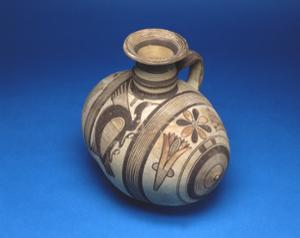
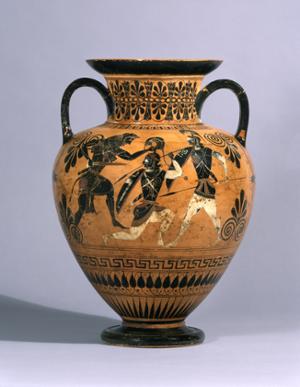

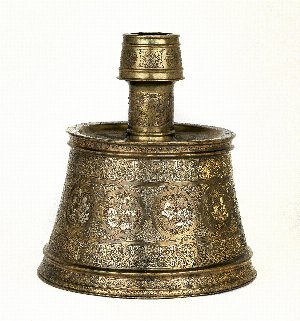
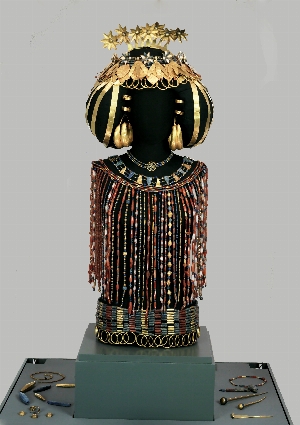
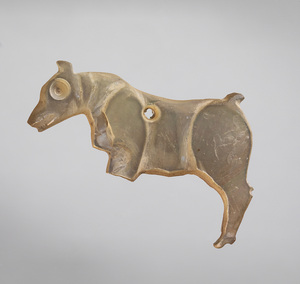
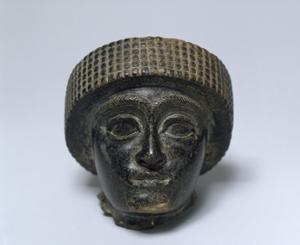
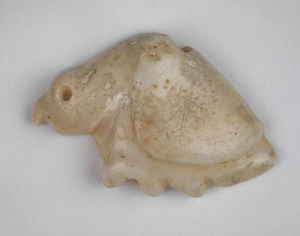
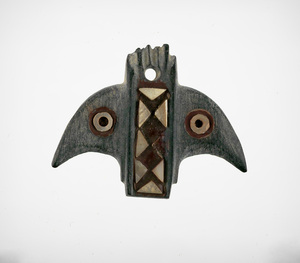
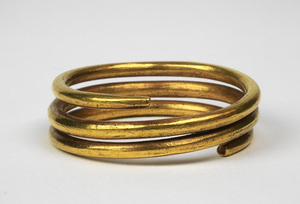
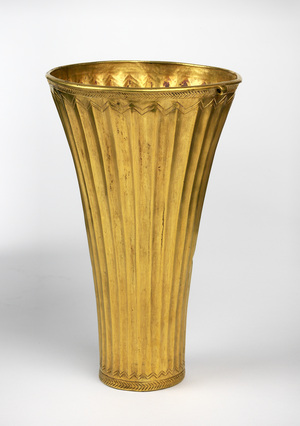
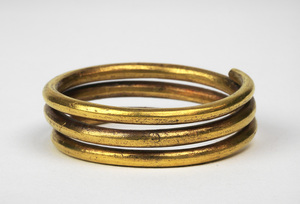
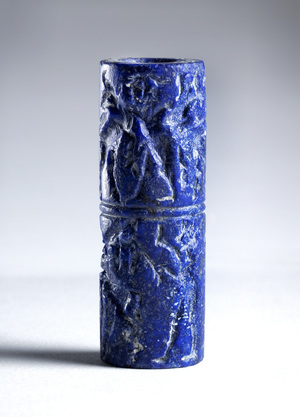

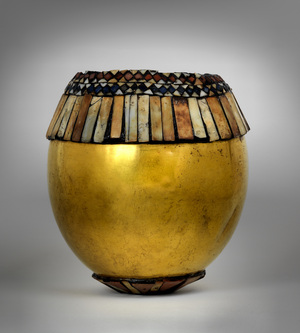
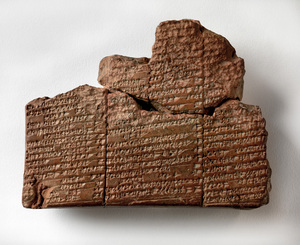
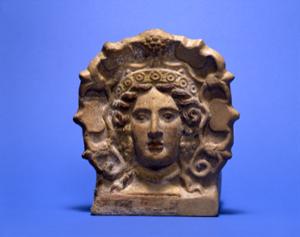
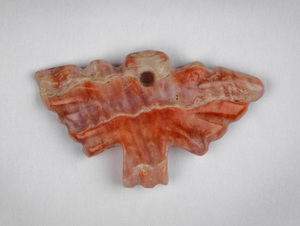

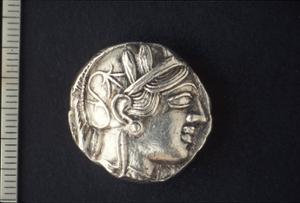

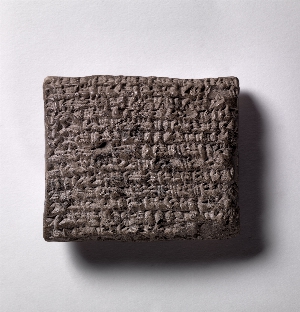
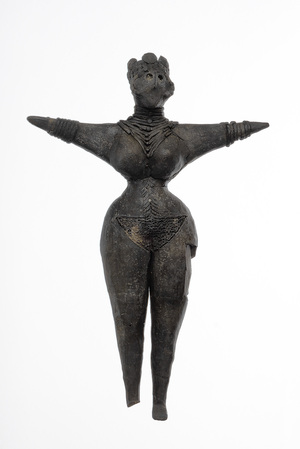
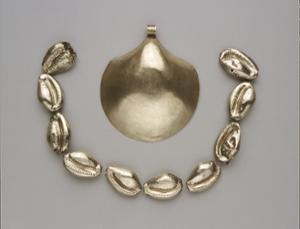
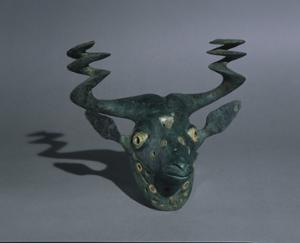
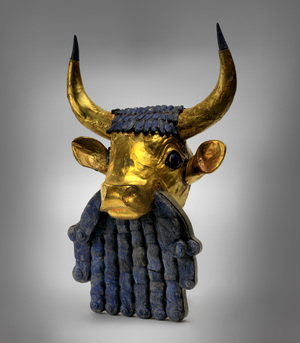
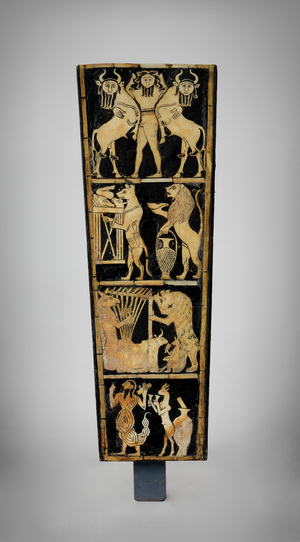
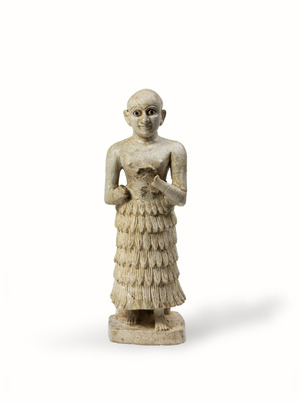
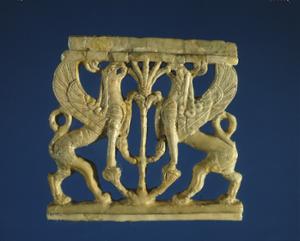
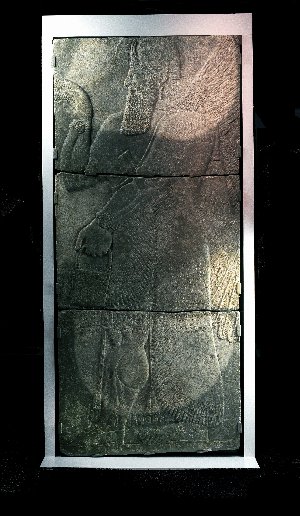
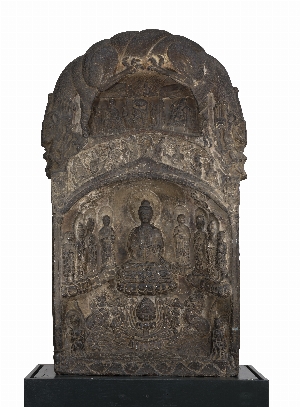
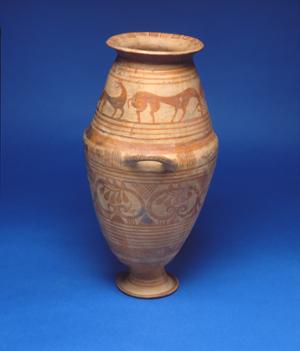
1 - 30 of 112 Records

